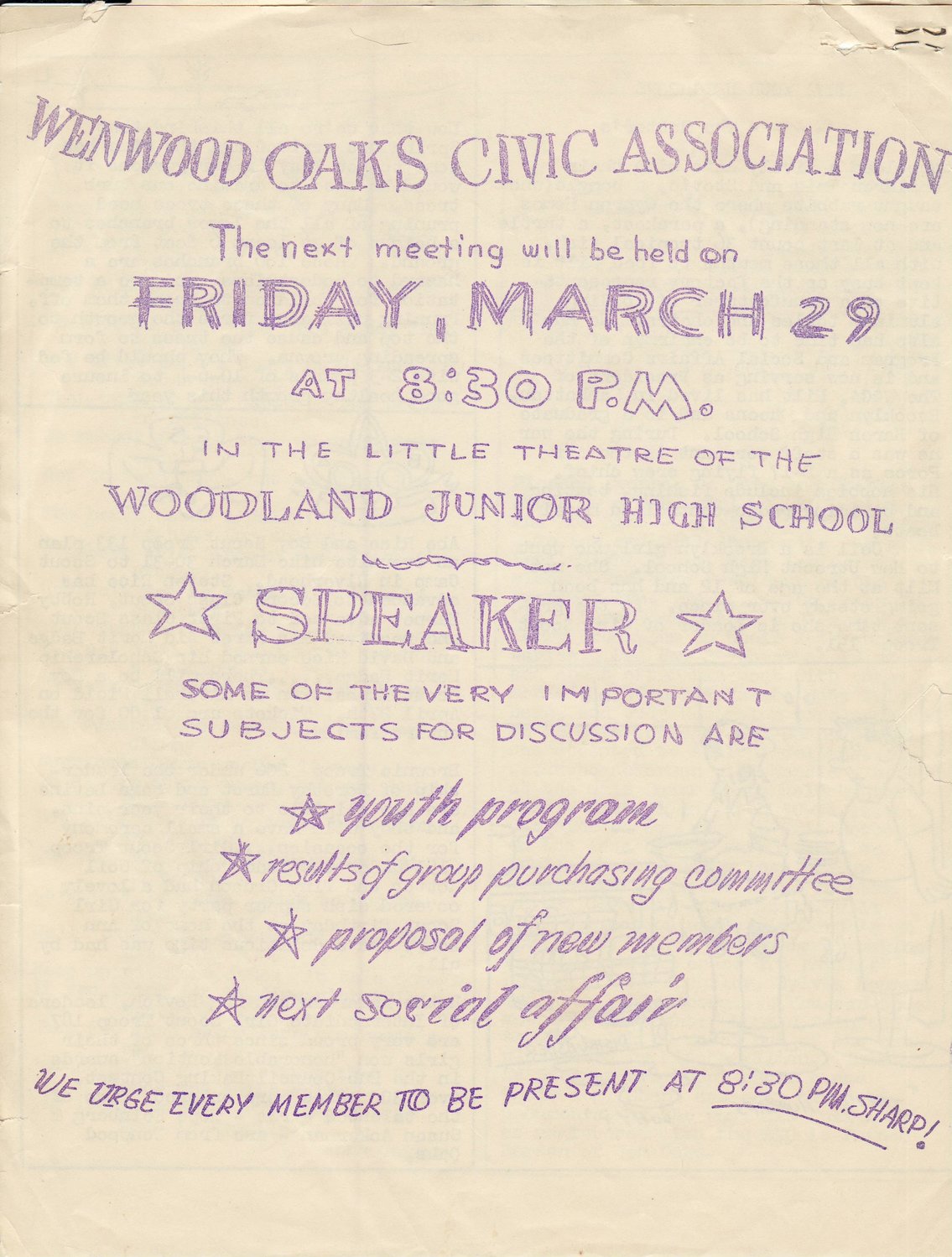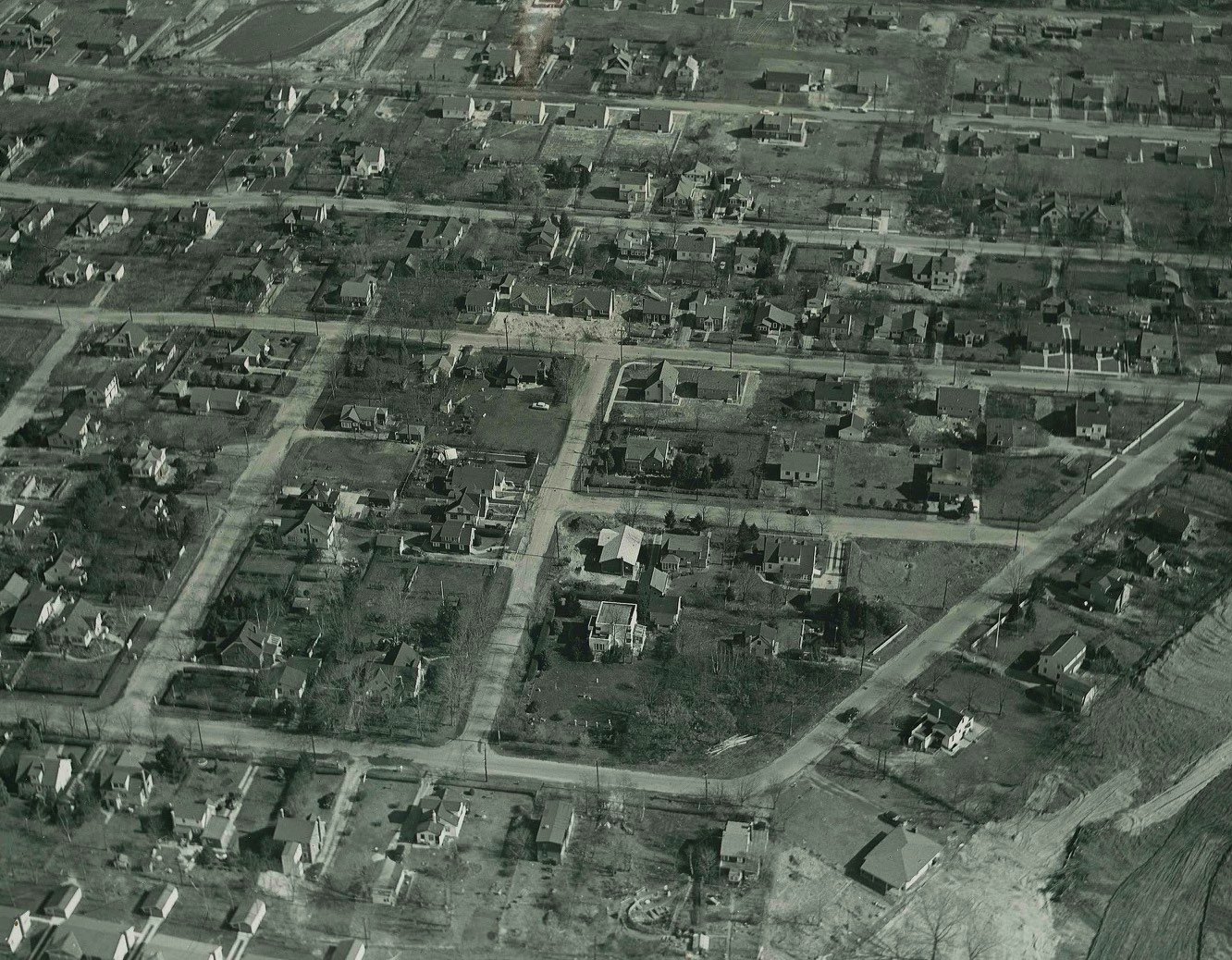The Importance of East Meadow Civic Associations
Any high school student should be able to tell you of America's most famous postwar suburban development: Levittown. This idyllic community became famous nationwide for its cheap, cute, cookie-cutter homes on potato fields near New York City. But another housing boom was happening just west of Levittown, and the new residents were eager to organize themselves into civic associations. Keep in mind, these developments were largely populated by war veterans and unionized employees; it is no surprise that they would find ways of incorporating homeowners into associations that aimed to improve life in their new neighborhoods.
The idea of neighborhood associations was not born during the Baby Boom period. In 1922, residents of the rural-but-growing East Meadow organized a Welfare Association that sought to address community concerns about "school facilities, fire protection, vigilant and social affairs." Meetings were held in East Meadow Hall (the old schoolhouse) and were apparently quite successful: members quickly influenced voters to approve a large addition to the school and the creation of a fire district. Similar concerns were addressed a generation later.
In the 1950s, civic or homeowners' associations ranged from loose confederations of neighbors to highly-structured organizations with their own constitutions. Evidence from a 1962 school policy handbook suggests the level of activity and influence within these associations. The district began providing free use of its Little Theaters to civic associations, but they were used so frequently, each association was limited to using the closest secondary school. Many of the civic associations had committees that served various functions in the developments such as publishing a monthly newsletter, welcoming new neighbors, or coordinating social events like dinner dances. Chairmen of finance, grievance, sports, youth, and even picnic committees were active in building neighborly relationships. Community concerns over school issues like busing and overcrowding, quality of life issues such as unfavorable construction projects, and safety issues like traffic congestion, were frequent topics at meetings.
In September 1951, a group of parents living in Salisbury Park Manor organized a petition to ask for a school bus stop near Bly Road. Residents of Klein and Teicholz's Lakeville Estates organized a civic association that still exists. That group campaigned against unfavorable development of the old Mitchel Field property. The Carman Community Association's September 1969 newsletter weighs the pros and cons of high-density construction at the same site. By the 1970s, many of the original civic associations pooled resources to create the Council of East Meadow Community Organizations. In 1989, the Cypress Circle Civic Association, Clearmeadow Civic Association, and Flower Streets Civic Association, in coordination with CEMCO, petitioned to fill an unsafe sump.
Do you have an original deed to your 1950s East Meadow house? Look for development names — East Meadow Lawns, Midland Gardens, Central Homes, Suburban Gardens, Birchwood Park, Lenox Estates, Salisbury Estates, Kay Manor, Wenwood Oaks — and find out if you belong to a civic association. Some of these are still active today, though they are largely run by only one or two residents without the assistance of a functioning board or regular elections. Infrequent meetings may occur to negotiate a shared oil or sidewalk contract, plan a block party, or try to influence local politicians. Gone are the days of the monthly newsletter, but some associations are finding new life on social media platforms. It has been much easier over the past few years to connect with your neighbors online, though familiar questions and suggestions drive the discussion: "Why is my water brown?" "What was that loud noise?" Or, the perennial favorite, "Lock your car doors!"
Dr. Scott Eckers is the author of East Meadow in Arcadia Publishing's Images of America series. He is Vice President of the East Meadow Board of Education as well as Social Studies Chair for the East Williston School District. Scott is also an entertainer and recording artist.









